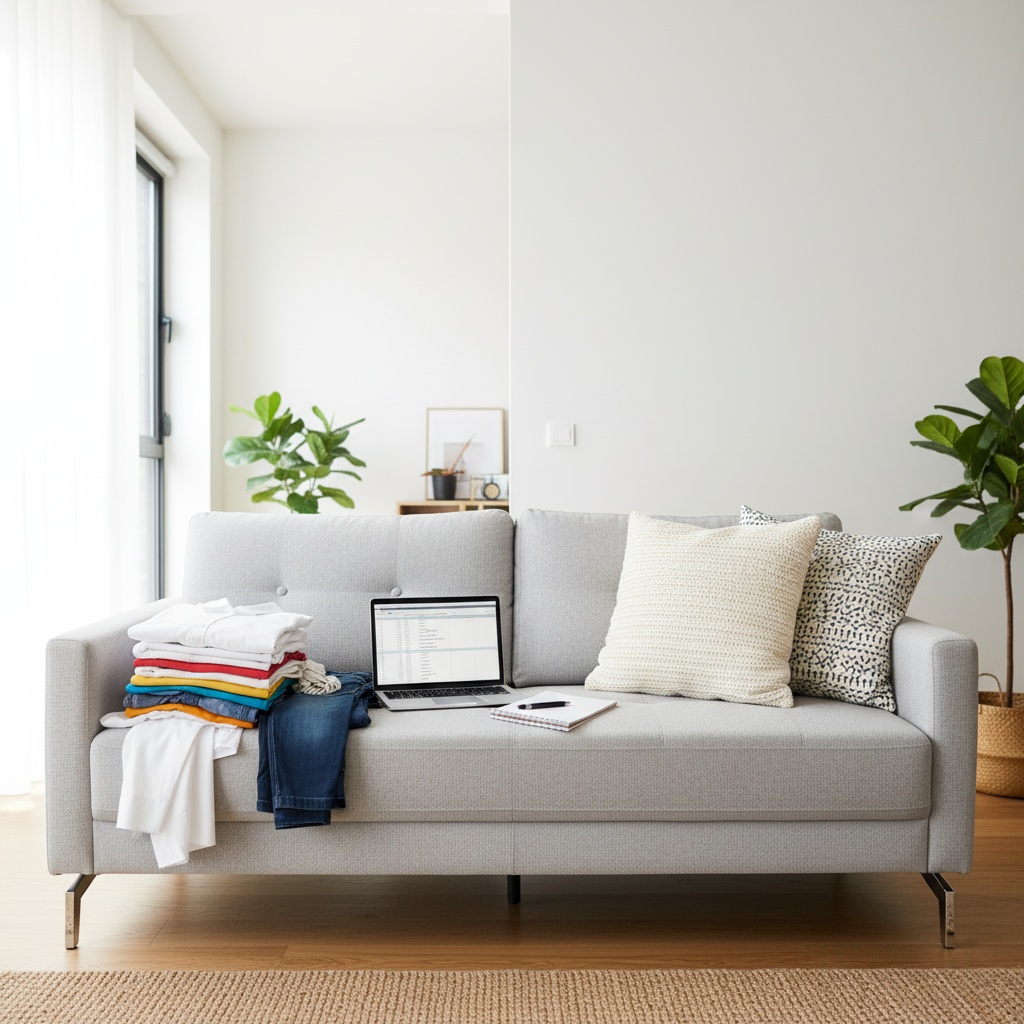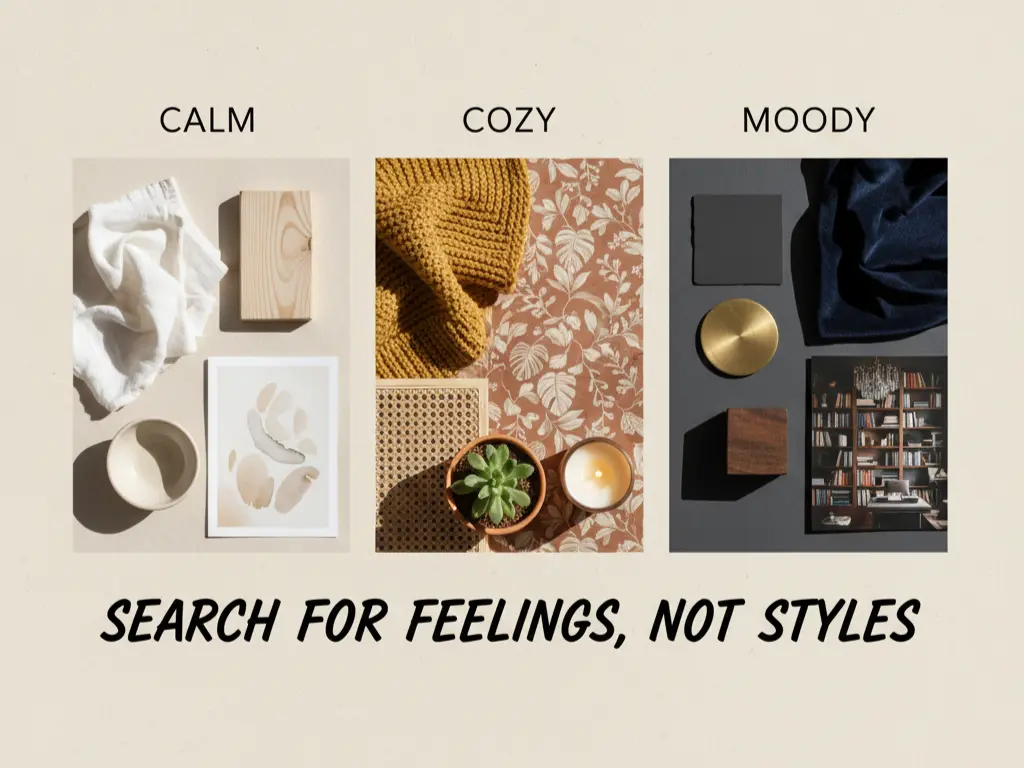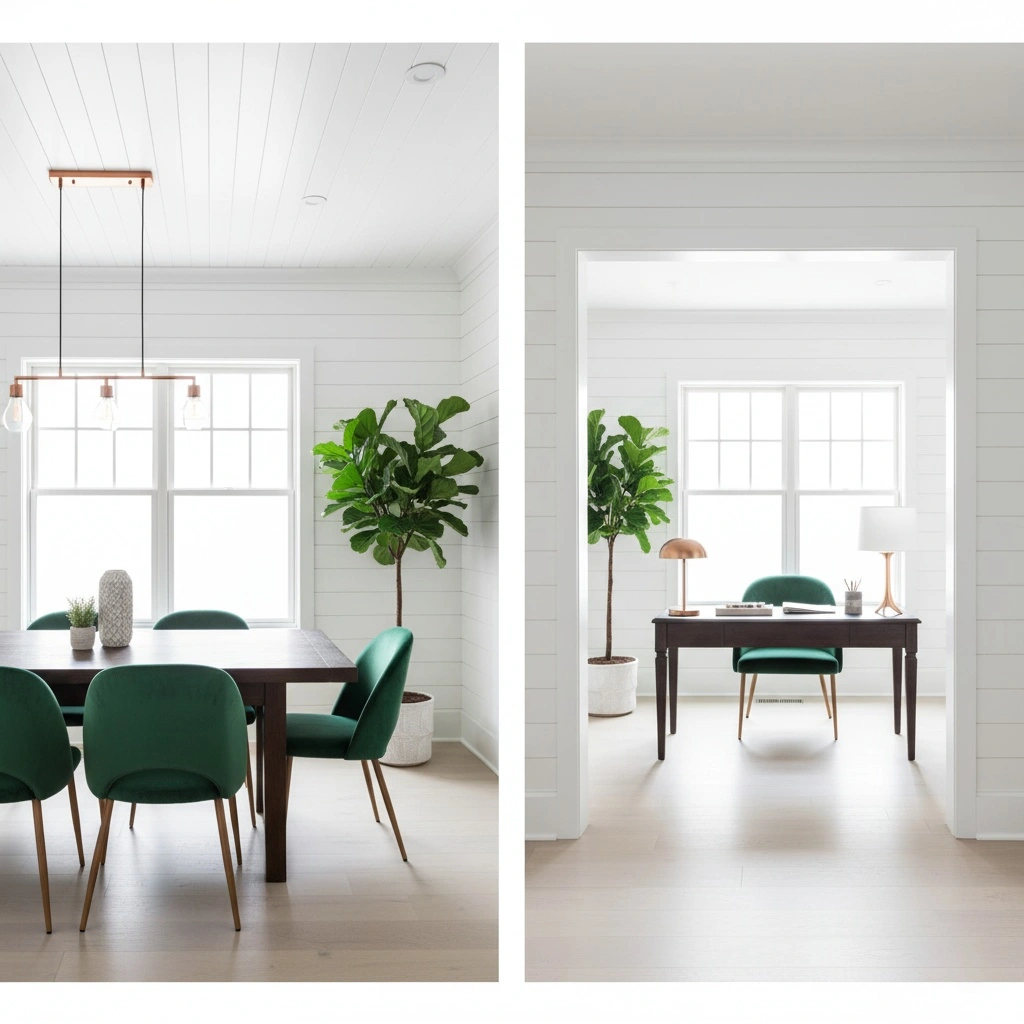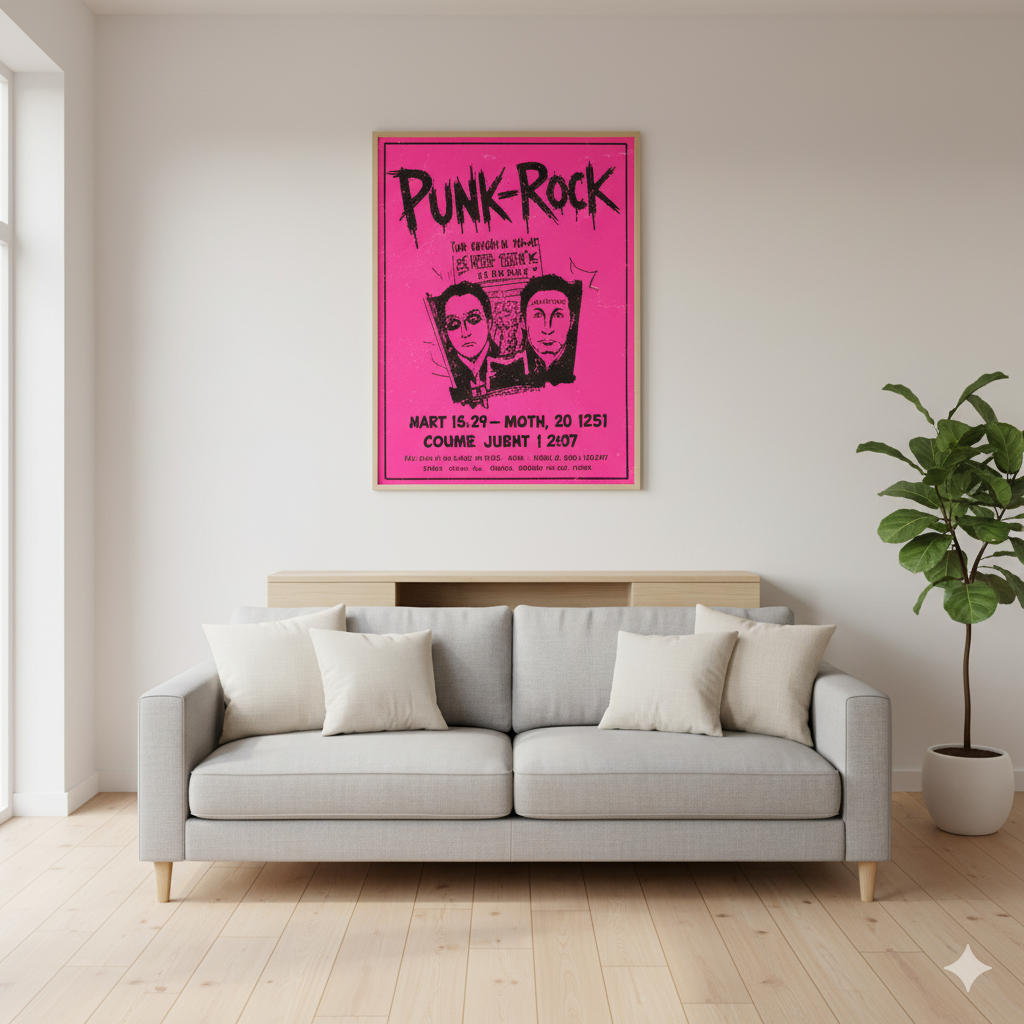Finding the Best Design Here: A Simple Framework for Home Style
You’ve done it, haven’t you? You’ve fallen down the Pinterest rabbit hole.
You started by searching for “cozy living room.” Three hours later, you’re 80 pins deep, your eyes are blurry, and you’re trying to figure out if your “style” is “Scandinavian Farmhouse,” “Moody Maximalist,” or “Coastal Grandma with a hint of Art Deco.”
This analysis paralysis is real. We see thousands of perfect, professionally staged images, and we feel… stuck. We end up with a living room that has one (1) grey sofa, a rug we’re “meh” about, and a profound sense of design failure.
I’ve been there. I once bought a “statement chair” that was so stunningly impractical it basically became a very expensive laundry holder.
The good news? You don’t need a fancy design label. You don’t need to throw everything out and start over. You just need a new perspective. Finding the best design here as in, right where you are, in your own home, is about creating a style that serves your life, not the other way around.
Forget the labels. I’m going to give you a simple framework for home style that actually works.
Step 1: The “Function Audit” – What Do You Actually Do Here?

Stop. Put the paint chips down. Before you buy a single throw pillow, you need to be brutally honest about the room you’re designing.
We often design for a fantasy life instead of our real one. We want the all-white, velvet-sofa living room. But what we have is a toddler with sticky hands, a dog that sheds, and a partner who loves to eat tacos on the couch.
Your design must serve your function. You can’t find your style if you’re fighting your own life.
I once tried to make my small spare room a “formal, chic sitting area.” I bought a structured, minimalist sofa and a glass-top coffee table. It looked amazing. And you know who used it? My dog. It became the world’s most expensive dog lounge. The actual function of that room was “a quiet place for the dog to nap.”
Once I accepted that, I swapped the fussy sofa for a durable, comfy daybed with a washable cover. The style immediately clicked into place because it was honest.
Your Function Audit Checklist
Ask yourself these questions. Write down the answers. No-holds-barred honesty, okay?
- Who really uses this room? (Is it just you? You and your partner? The kids? The dog? Be specific.)
- What is the main job of this room? (Is it “watching TV,” “reading quietly,” “dumping mail and keys,” “hosting chaotic dinners”?)
- What is the secret job of this room? (This is the one we ignore. Is it also your part-time “Zoom office”? Your “laundry folding station”? The “cat’s highway”?)
- What is the single biggest pain point? (e.g., “There’s nowhere to put my drink,” “The lighting is terrible,” “I trip over shoes.”)
Congratulations. You just created the blueprint for your design. Your style, whatever it becomes, must solve these problems.
Step 2: The “Feeling Files” – How Do You Want to Feel?

Okay, now you get to go back to Pinterest. But we’re going to do it differently.
Your original mistake was searching for style labels (like “Boho” or “Scandi”). This time, I want you to search for style feelings. How do you want this room to make you feel when you walk into it?
Are you craving a space that feels…
- Light, airy, and calm?
- Cozy, warm, and collected?
- Dramatic, creative, and moody?
- Energetic, happy, and vibrant?
Create a new, secret Pinterest board. Call it “My Home Feeling.” Pin images that give you that gut-level emotional reaction. Don’t analyze why. Just pin.
Translating “Feelings” into “Styles”
After a week, go look at your board. You’ll be shocked. You’ll see patterns you never knew you had. IMO, this is the single most important step in finding your style.
Those patterns are your style. The labels? They’re just helpful descriptors.
- If you pinned: Lots of white space, light woods, natural light, clean lines, and neutral colors…
- You Feel: Calm, serene, and organized.
- The “Styles” You’re Pulling From: Scandinavian, Minimalist, Coastal.
- If you pinned: Tons of plants, layered rugs, warm wood tones, vintage pieces, and lots of texture (rattan, macramé, velvet)…
- You Feel: Cozy, creative, and collected.
- The “Styles” You’re Pulling From: Bohemian, Eclectic, Mid-Century Modern.
- If you pinned: Dark walls (navy, emerald, charcoal), bold patterns, gold or brass metals, and dramatic, rich fabrics…
- You Feel: Moody, dramatic, and sophisticated.
- The “Styles” You’re Pulling From: Art Deco, Maximalist, Industrial.
See? You don’t have to pick a label. You just figured out your core ingredients. Finding the best design here means finding the ingredients that make you feel right in your own space.
Step 3: The “Flow Factor” – Making Your Home a Home (Not Just Rooms)

Ever walked into a house where every room feels completely disconnected? The living room is “French Country,” the kitchen is “Ultra Modern,” and the bedroom is “Tropical Jungle.” It’s jarring, right?
Your home should feel like a cohesive album, not a random playlist of different genres. This sense of “flow” is what separates a nice room from a beautiful home.
You achieve this with two simple tools: a Color Palette and Repetition.
Nail Your Home Color Palette (The 60-30-10 Rule)
This is the oldest trick in the book, and it works. Pick 3-5 colors for your entire house and use them in different ways in every room.
This is my simple version:
- 60% (Your Main): This is your workhorse neutral. It’s your wall color, your sofa color. (e.g., Soft White, Warm Greige, Light Grey).
- 30% (Your Secondary): This is your main “color.” It’s more interesting. (e.g., Navy Blue, Olive Green, Terracotta).
- 10% (Your Accent): This is your “pop!” (e.g., Mustard Yellow, Bright Coral, Matte Black).
In your living room, the walls might be Greige (60%), the sofa Navy (30%), and the pillows Mustard (10%).
In your bedroom, the walls might still be Greige (60%), the bedding Mustard (30%), and a picture frame Navy (10%).
See the magic? It’s the same family of colors, just used in different proportions. That, my friend, is flow.
The Secret Weapon: Repetition
This is my favorite trick. To tie your home together, pick one or two “threads” and weave them through every single room.
It can be a color, a material, or a finish.
- A Finish: Maybe matte black is your thread. You have it in your living room lamp, your kitchen cabinet hardware, your bathroom faucet, and your bedroom picture frames.
- A Material: Maybe it’s natural rattan. You have a rattan planter in the living room, rattan placemats in the kitchen, and a rattan-fronted nightstand in the bedroom.
This repetition is a subtle, powerful signal to your brain that says, “This all belongs together.”
Step 4: The “Filter” – Adding the “You” That No Catalog Has

This is the final step. And it’s the most important.
You can do all the steps above and end up with a beautiful, functional, cohesive home that looks… exactly like a page from a West Elm catalog. It’s nice, but it has no soul. It has no you.
The “Filter” is about injecting your weird, messy, wonderful personality into the space.
This is your quirky art from a college flea market. This is your grandmother’s slightly-beat-up armchair. This is your kid’s framed “masterpiece.” This is that ugly-but-beloved souvenir you bought in Mexico.
I hear people say this all the time: “I love this, but it doesn’t match my ‘Minimalist’ style.”
Spoiler alert: It doesn’t matter.
If you only include things that “match,” you’ll have a showroom, not a home. The “Filter” is about intentionally breaking your own rules for the things you love.
Your unique style is born in the tension between your “Feeling Files” (that calm, Scandi vibe) and your “Filter” (your neon pink punk-rock concert poster). How do you make those two things talk to each other?
You frame that poster in a simple, light-wood frame (Scandi). You hang it over a clean-lined console (Scandi). You just made them friends. That is personal style.
The best design here isn’t in a store. It’s in your history, your hobbies, and your heart. Don’t hide those things. Make them the star.
Conclusion: Your Framework for a Home That Feels Like You
Let’s recap. Forget the stressful labels. Your simple, four-step framework is all you need:
- Function: What does this room need to do?
- Feeling: How do I want to feel in this room?
- Flow: How does this room connect to the rest of my home?
- Filter: Where is my story in this room?
Your personal style isn’t something you find online. It’s something you build, decision by decision, based on your real life. It’s a mix of your practical needs, your emotional wants, and the unique, weird, wonderful stuff that makes you you.
So stop scrolling for the “perfect” style and start looking at your own life. The best design is here, right under your nose. Now go make something that feels like home. 😉

